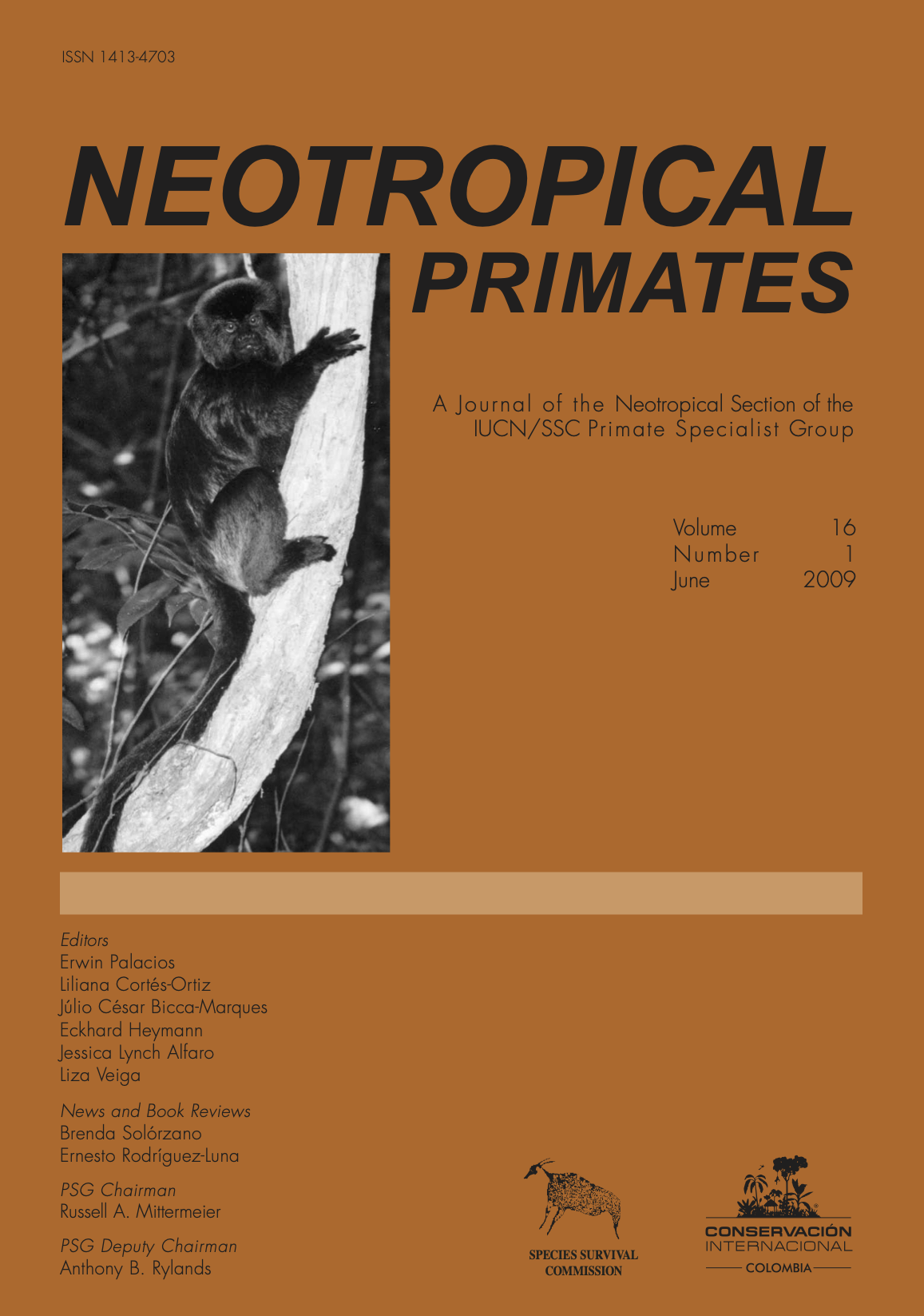Trunk-to-trunk leaping in wild Callimico goeldii in northern Bolivia
DOI:
https://doi.org/10.1896/044.016.0102Keywords:
callitrichines, locomotion, bamboo, habitatAbstract
Compared to other species of tamarins and marmosets, callimicos (Callimico goeldii) are characterized by hindlimb and hindfoot elongation, and a pattern of locomotion dominated by leaping to and from vertical supports in the forest understory. We present field data on trunk-to-trunk leaping in a habituated group of callimicos in northern Bolivia. We measured the DBH of the takeoff and landing platform, and the distance traveled during 110 trunk-to-trunk leaps. Our results indicate that mean distance leapt by callimicos was 1.8 m (range 0.2–4.3m). There were no significant differences in the size of takeoff (mean = 10.3 cm) and landing platforms (mean = 9.9 cm). In addition, longer leaps did not occur on larger diameter supports than did shorter leaps. Although tree trunks and saplings were the most commonly used takeoff and landing platforms, 31.8% of the time callimicos jumped to and from bamboo culms. These data highlight the facts that trunk-to-trunk leaping represents a highly specialized pattern of locomotion in callimicos, and that these primates travel through mixed forests that include stands of bamboo and canopy trees. Conservation efforts to sustain viable populations of Callimico goeldii must focus on protecting and preserving habitats that contain large tracts of mixed bamboo and secondary forest.

Downloads
Published
Issue
Section
License

This work is licensed under a Creative Commons Attribution-NonCommercial-ShareAlike 4.0 International License.


